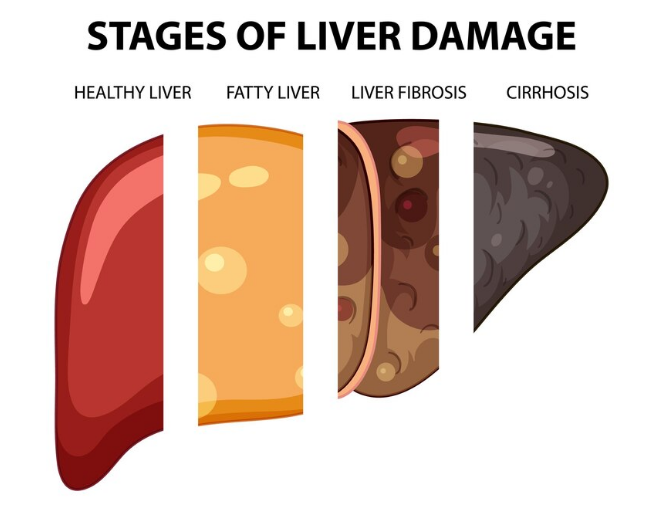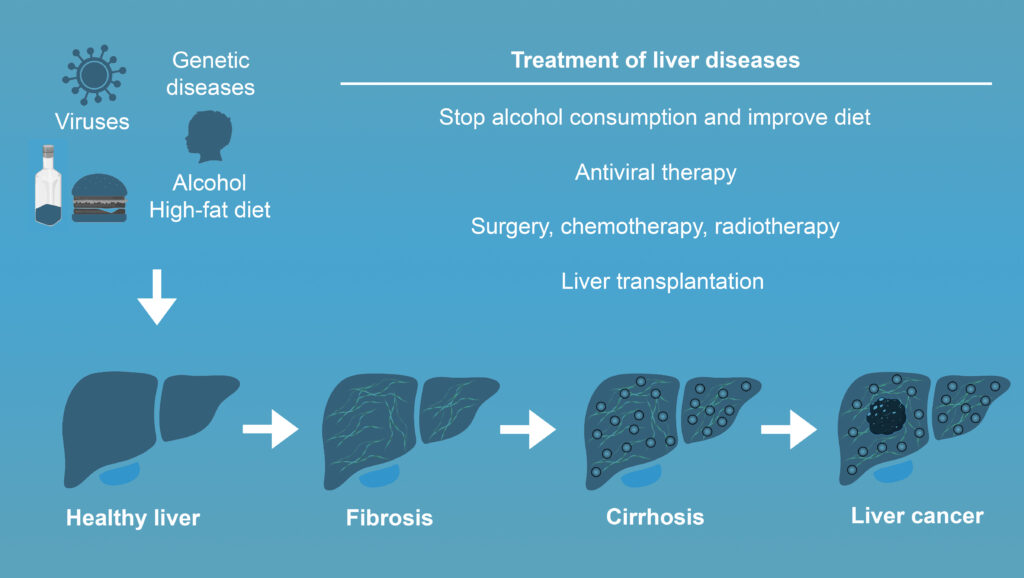Accueil » The liver diseases
The liver diseases

The liver, an organ essential to life
The liver is an organ located under the rib cage, on the right side of the abdomen.
It is the second largest organ after our skin. More importantly, the liver is essential for the human body to function properly and more than 500 biological functions have been attributed to this organ. Some of these include food digestion and the elimination of toxic substances from the body.
Interestingly, the liver regrow to a normal size even after up to 90% of it has been removed.
The liver diseases
A wide variety of causes can lead to similar complications…
Despite its incredible regenerative capacity, many diseases can harm the liver beyond the point of repair. Liver diseases can develop in different ways. A person might be born with a particular disease that affects the liver (genetic), they might contract liver disease (hepatitis viruses) or it can result from persistent exposure to damaging agents (alcohol or a high-fat diet). In many cases this persistent liver damage leads to a progressive scaring of the liver (fibrosis) which can develop into permanent damage of the organ (cirrhosis) and further complications such as liver cancer (hepatocellular carcinoma).


Taking care of the liver
Prevention, management and treatment
Treatment for liver diseases depends on the particular situation that is causing the health problem. Some liver complications can be managed by changing our lifestyle, such as stopping alcohol use or adopting a healthier diet.
Other liver problems can be treated with medication, such as in the case of hepatitis viruses where antivirals are prescribed to target the underlying cause.
At a more advanced stage of the disease, for example in cases of cirrhosis or liver cancer, it may be necessary to resort to chemotherapy, surgery or liver transplantation.
In all cases, a hepatologist will advise you on the best treatment.


